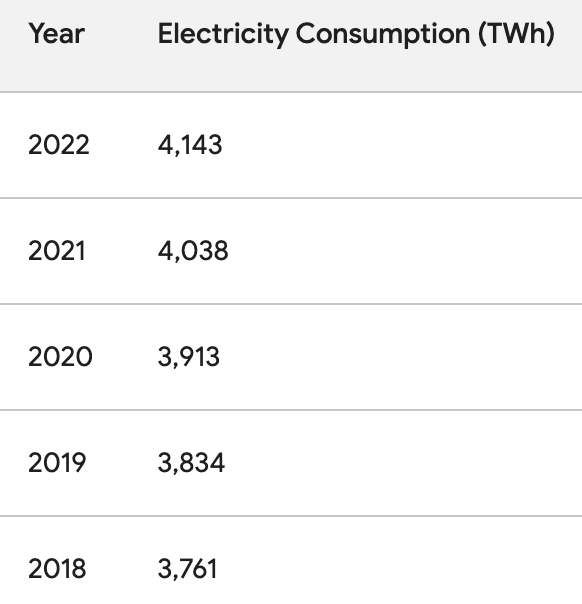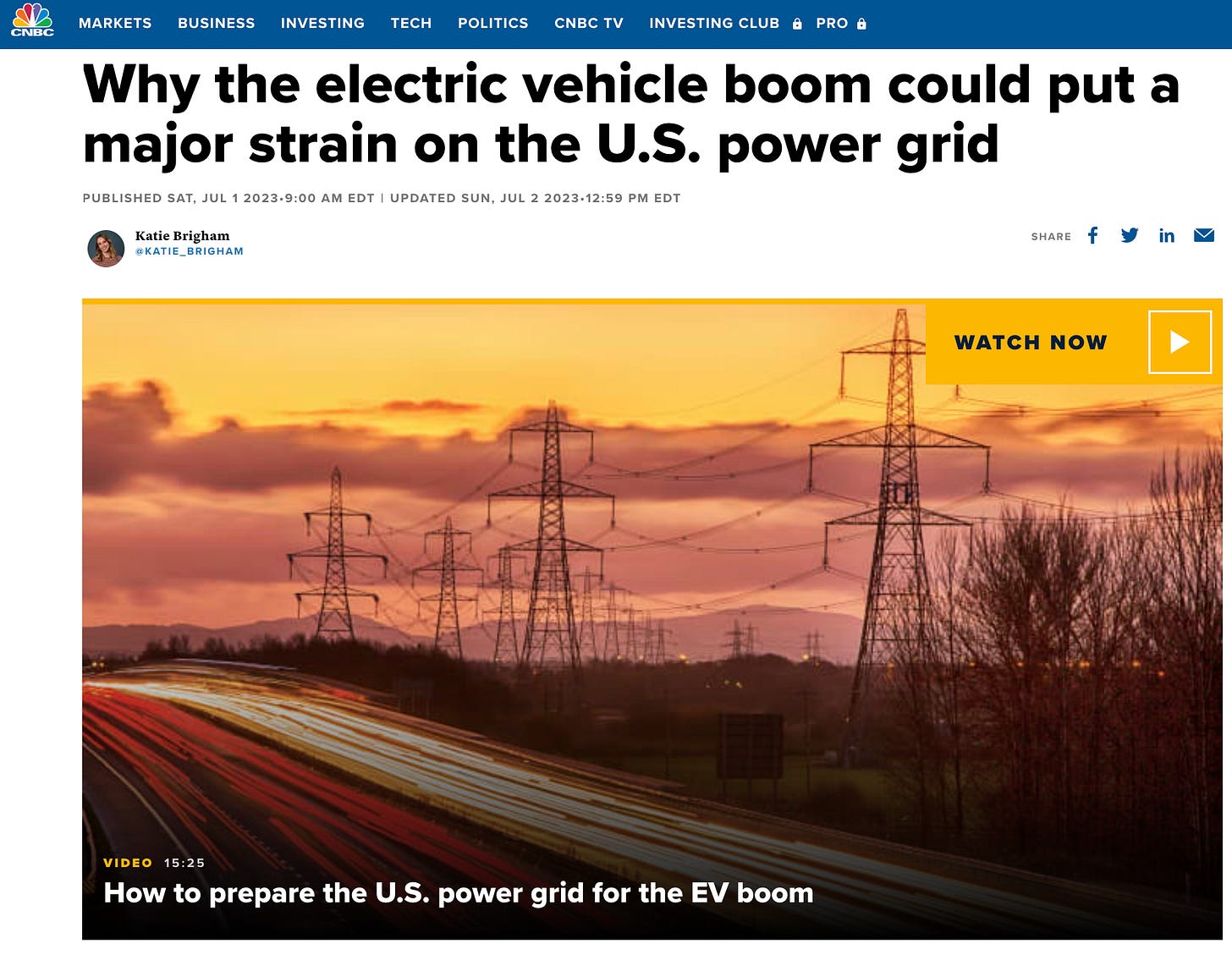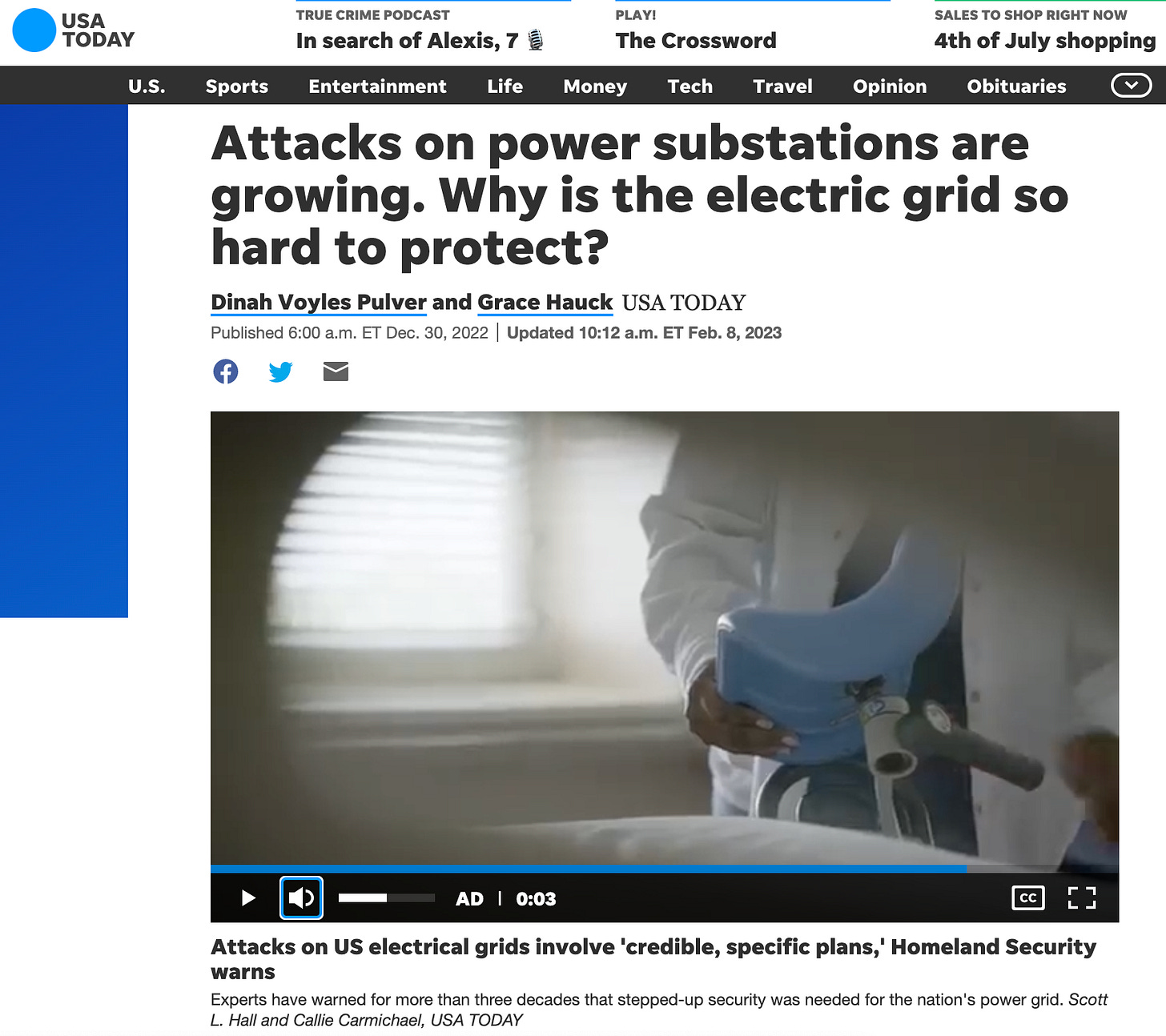Will USA face an electricity crunch with its ageing infrastructure by 2030? (03July2023)
Electricity consumption in the USA
Since 2018, the increase in electricity consumption is between 1.94 to 3.19%. The latest addition in electricity consumption between 2021 to 2022 is about 2.60%.
(The following data were extracted from Google Bard.)
Electricity Production Capacity in the USA
The electricity production capacity in the United States is about 4,000 terawatt-hours (TWh) in 2023. It is projected to increase to 4,300 TWh by 2030.
The majority of electricity in the United States is produced by fossil fuels, such as coal, natural gas, and petroleum. Renewable sources of electricity, such as solar and wind power, are becoming increasingly popular, but they still account for a relatively small share of the total electricity production.
The increase in electricity production capacity is being driven by a number of factors, including population growth, economic growth, and the increasing demand for electricity from electric vehicles.
Electricity Demand in the USA
The electricity demand in the United States is expected to grow by about 1.2% per year over the next 10 years. This growth is driven by several factors, including population growth, economic growth, and the increasing demand for electricity from electric vehicles.
In 2022, the electricity demand in the United States was about 4,143 terawatt-hours (TWh). It is projected to reach 4,530 TWh by 2030.
The increase in electricity demand is being driven by a number of factors, including:
Population growth: The population of the United States is expected to grow by about 0.7% per year over the next 10 years. This growth will lead to an increase in the demand for electricity for residential and commercial use.
Economic growth: The US economy is expected to grow by about 2.1% per year over the next 10 years. This growth will lead to an increase in the demand for electricity for industrial use.
Electric vehicles: The number of electric vehicles in the United States is expected to grow rapidly over the next 10 years. Electric vehicles require more electricity than gasoline-powered vehicles, so their increasing use will lead to an increase in the demand for electricity.
The increase in electricity demand is putting a strain on the US power grid. The grid is not always able to meet the demand for electricity, which can lead to blackouts and brownouts. To meet the growing demand for electricity, the US power grid needs to be upgraded and expanded.
Latest News
This is an extract from CNBC news dated 01 July 2023.
Over half of all new cars sold in the U.S. by 2030 are expected to be electric vehicles. That could put a major strain on our nation’s electric grid, an aging system built for a world that runs on fossil fuels.
Domestic electricity demand in 2022 is expected to increase up to 18% by 2030 and 38% by 2035, according to an analysis by the Rapid Energy Policy Evaluation and Analysis Toolkit, or REPEAT, an energy policy project out of Princeton University. That’s a big change over the roughly 5% increase we saw in the past decade.
“So we’ve got a lot of power demand coming to this country when we really didn’t have any for the last, like, 25 years,” said Rob Gramlich, founder and president of Grid Strategies, a transmission policy group.
While many parts of the economy are moving away from fossil fuels toward electrification — think household appliances such as stoves, and space heating for homes and offices — the transportation sector is driving the increase. Light-duty vehicles, a segment that excludes large trucks and aviation, are projected to use up to 3,360% more electricity by 2035 than they do today, according to Princeton’s data.
But electrification is only an effective decarbonization solution if it’s paired with a major buildout of renewable energy. “So we have both supply-side and demand-side drivers of big grid needs,” Gramlich said.
That means we need major changes to the grid: more high-voltage transmission lines to transport electricity from rural wind and solar power plants to demand centers; smaller distribution lines and transformers for last-mile electricity delivery; and hardware such as inverters that allow customers with home batteries, EVs and solar panels to feed excess energy back into the grid.
My muse
With the estimated consumption of electricity to hit 4,530TWh by 2023, there is a shortfall of electricity as the capacity (by 2030) is only 4,300TWh. There implies an estimated shortfall of 230TWh by 2030.
During recent extreme weather, the power grid was unable to take the load required, leading to blackouts and power shortages. With the more extreme weather expected, the current power infrastructure will require reinforcements to withstand these. More investments will be required to bring meet the demand.
Recently, there were more attacks on power substations in the USA. Thus, there will also need to be more investment in the security of the infrastructure. Here are some news extracts from the USA Today article dated 30 Dec 2022:
Even before Christmas Day attacks on power substations in five states in the Pacific Northwest and Southeast, similar incidents of attacks, vandalism and suspicious activity were on the rise.
Federal energy reports through August – the most recent available –show an increase in physical attacks at electrical facilities across the nation this year, continuing a trend seen since 2017.
At least 108 human-related events were reported during the first eight months of 2022, compared with 99 in all of 2021 and 97 in 2020. More than a dozen cases of vandalism have been reported since September.
The attacks have prompted a flurry of calls to better protect the nation's power grid, but experts have warned for more than three decades that stepped-up protection was needed.
The US government should be able to identify this shortfall and have 7 years to beef up its power grid network, security and capacity. While I do not see much of a concern, this would require planning and proper implementation.
Thus, the energy sector can be an interesting sector to look into.




Comments
Post a Comment